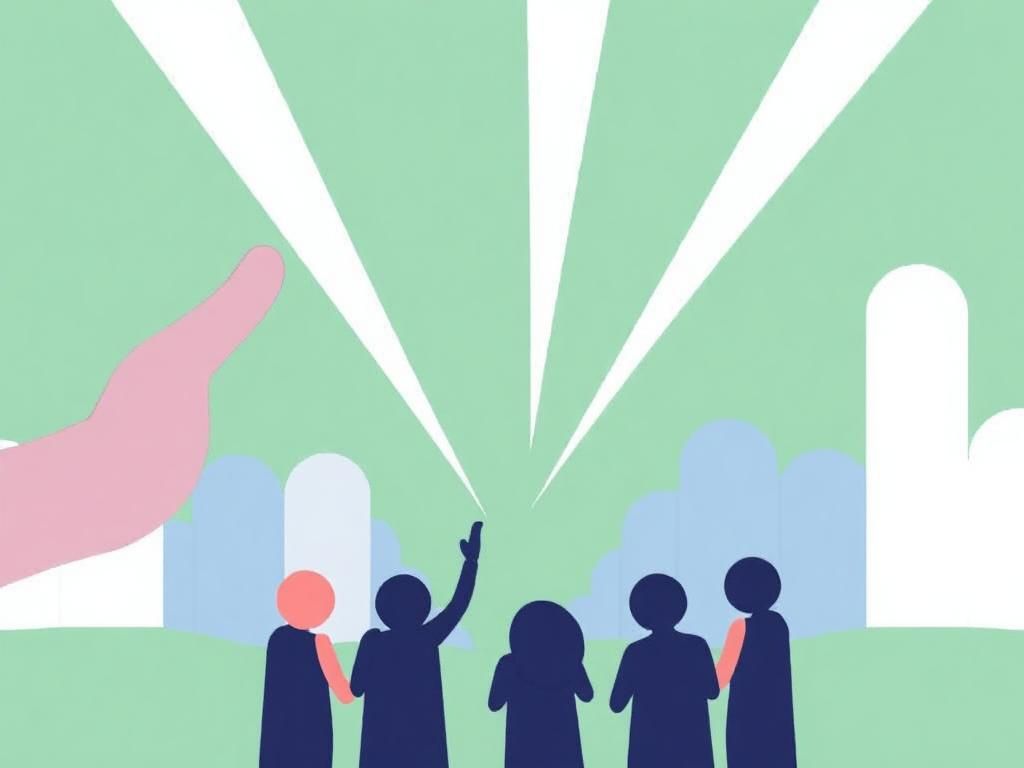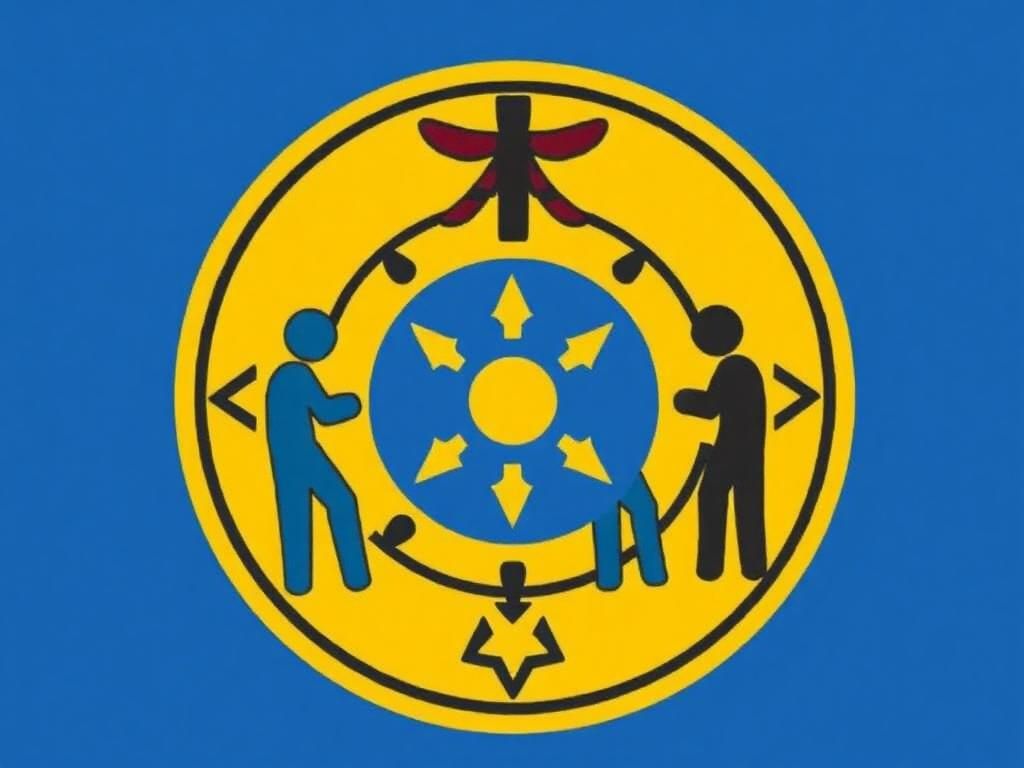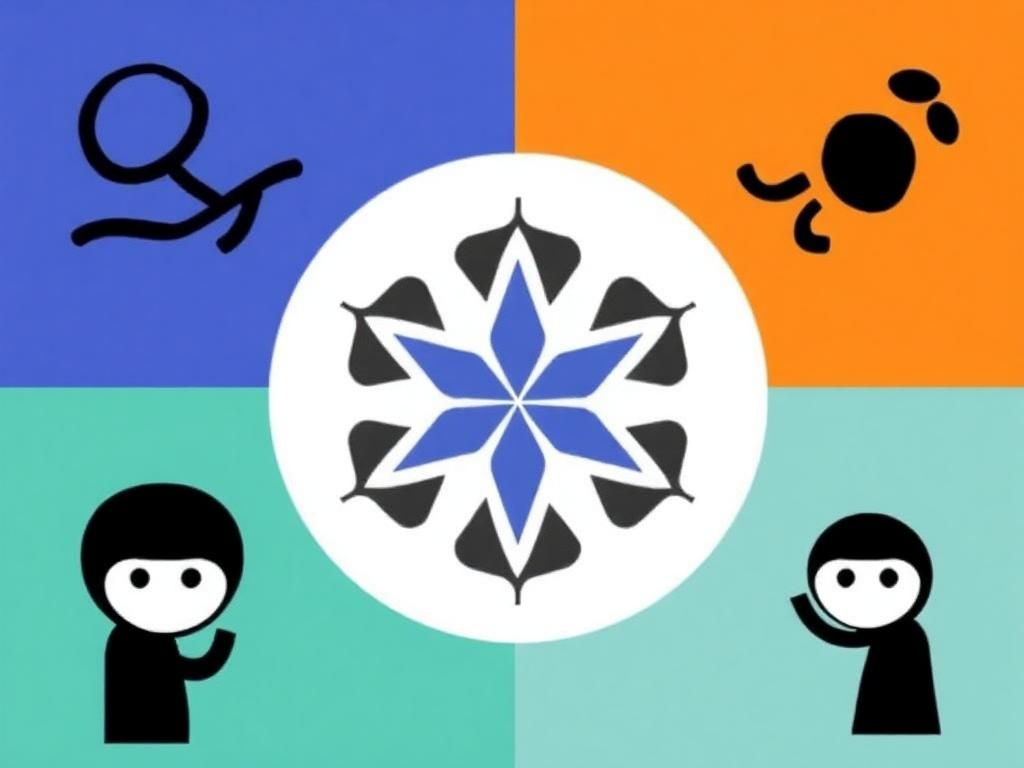The concept of unity transcends various aspects of human experience, serving as a cornerstone of social cohesion, cultural identity, and collective resilience. In a world marked by diversity—be it cultural, social, or political—the significance of symbols that embody unity is profound and far-reaching. This article delves into the rich tapestry woven by unity symbols, examining their historical roots, cultural expressions, modern manifestations, and psychological implications.
Historical Context of Unity Symbols
Ancient Civilizations
Throughout history, ancient cultures have used symbols to promote a sense of community and shared beliefs. The Egyptian Ankh, a cross with a loop at the top, symbolizes eternal life and interconnectedness, serving as a potent icon of unity in the afterlife. Similarly, the Greek Circle represents wholeness and unity, often used in philosophical contexts to discuss the idea of completeness within society. The Roman Laurel Wreath, awarded to victors and symbolizing accomplishment, fostered a collective pride and identity among citizens, affirming their shared values and aspirations.
These symbols were more than mere artwork; they played a crucial role in promoting community bonds and cultural continuity. By understanding the symbol meaning unity in these ancient contexts, we gain insights into how societies have historically strived for collective identity.
Religious Symbols of Unity
Religious traditions around the globe often rely on symbols to convey deep meanings related to unity. The Christian Cross, for example, signifies sacrifice and redemption, fostering unity among believers who share a faith centered on love and forgiveness. In Islam, the Star and Crescent serves as a symbol of faith and unity among Muslims worldwide, representing a shared commitment to their beliefs.
Likewise, the Hindu Om symbol encapsulates the essence of the universe, resonating with followers’ aspirations for spiritual union and collective enlightenment. Each of these symbols embodies the notion of belonging to a larger community, reinforcing the idea that spirituality can be a powerful unifying force.
Cultural Symbols of Unity
Flags as Unity Symbols
National flags are poignant representations of unity, often crafted to embody the ideals and values of a nation. The United Nations flag symbolizes global unity and peace, presenting a vision of cooperation among diverse nations. The flag is distinctive for its globe surrounded by olive branches, signifying a commitment to dialogue and peaceful resolutions.
Additionally, the rainbow flag, a symbol of LGBTQ+ unity, represents diversity and inclusivity within the community. Its colorful design transcends boundaries, advocating for equal rights and recognition for all, regardless of sexual orientation or gender identity. These flags are more than just fabric; they are rallying points for collective identity and shared aspirations.
Art and Literature as Expressions of Unity
Artistic expressions often reflect the theme of unity, showcasing how creativity can bridge divides. Renowned works such as Picasso’s Guernica highlight the horrors of war while advocating for peace and solidarity among humanity. Furthermore, poetry and literature have extensively explored the human experience of connection, often celebrating the shared psyche that binds us together.
Art movements, such as the Renaissance and Surrealism, also tackled themes of unity, portraying collective human experiences that transcend individual struggles. These cultural expressions serve as powerful reminders of our interconnectedness, underlining the importance of symbol meaning unity in everyday life.
Modern-Day Symbols of Unity
Global Movements and Unity Symbols

In contemporary society, various movements harness the power of unity symbols to foster social change. The Black Lives Matter movement, for instance, has become synonymous with the fight against systemic racism, using slogans and symbols to unite activists globally. The raised fist, a symbol of resistance, encapsulates the struggle for equality and justice.
Environmental movements, such as Earth Day, combine diverse voices under the shared goal of protecting our planet. These initiatives employ symbols—like the Earth itself—to foster a collective sense of responsibility and urgency regarding climate action. Similarly, women’s rights activism utilizes symbols such as the Purple Hand to signify progress and solidarity among advocates for gender equality.
Technology and Digital Symbols of Unity
With the advent of digital technology, symbols of unity have migrated to online platforms. Hashtags, such as #StrongerTogether and #MeToo, have become instrumental in creating virtual communities and raising awareness on pressing social issues. These digital symbols not only represent unity but also empower individuals to share their narratives, connecting them to a broader movement advocating for change.
Social media has facilitated the rapid dissemination of these symbols, allowing for greater engagement and activism on a global scale. The proliferation of these symbols in digital spaces highlights the evolving nature of symbol meaning unity in our interconnected world.
Psychological and Social Implications of Unity Symbols
The Role of Unity Symbols in Group Identity
Unity symbols play a critical role in shaping group identity. They contribute to a strong sense of belonging, instilling pride and camaraderie among members of a community. When individuals recognize and embrace shared symbols, it fosters collective behavior that promotes solidarity and cooperation.
Understanding the psychological implications of these symbols reveals their power in building community bonds. Belonging to a group that shares the same symbol meaning unity enhances social cohesion and strengthens collective actions, making the group more resilient and united in the face of challenges.
Unity Symbols in Conflict Resolution
Symbols can also serve as tools in conflict resolution, aiding peace-building efforts in divided societies. Historical examples, such as the use of the dove of peace, illustrate how symbols can facilitate dialogue among conflicting parties. Such symbols create a common ground where opposing sides can come together to negotiate and reconcile their differences.
Successful instances of using unity symbols in healing divided societies demonstrate their efficacy in fostering understanding and compassion among communities. By appealing to shared values and symbolic recognition, these efforts can lead to lasting peace and collaboration.
Theoretical Perspectives on Unity Symbols
Semiotics and Symbolism
To fully appreciate the significance of unity symbols, it is essential to explore the field of semiotics. This discipline examines the relationship between signs, their meanings, and the societal contexts in which they exist. In understanding symbol meaning unity, semiotics illustrates how symbols can convey complex ideas and emotions, often transcending language and cultural barriers.
The interplay of context and interpretation highlights how symbols can shift in meaning, influenced by societal changes and the evolving nature of human experience. The power of unity symbols lies in their ability to resonate with shared values and collective aspirations.

Psychological Interpretations of Symbols
Psychological theories, such as those proposed by Jung, offer insights into the archetypes represented by unity symbols. Jungian psychology emphasizes the collective unconscious—the shared reservoir of experiences and symbols that shape individual psyches. The images and motifs associated with unity often tap into these deep, universal aspects of human experience, creating a profound resonance among individuals.
Understanding the psychological underpinnings of these symbols reveals how they can influence both individual behavior and collective dynamics. Recognizing solidarity in symbols fosters a sense of belonging and connection, reinforcing the psychological importance of symbol meaning unity in our lives.
Conclusion: The Enduring Power of Unity Symbols
In reviewing the various dimensions of symbol meaning unity, we can see that these powerful icons serve to connect individuals across diverse contexts, fostering a sense of belonging and shared purpose. From ancient civilizations to modern social movements, unity symbols have evolved, yet their core function remains unchanged: to unite people in a common cause.
As we navigate an increasingly divided world, the importance of embracing and creating our symbols of unity cannot be overstated. Whether through art, activism, or personal engagement, individuals have the potential to inspire and foster unity in their communities. By recognizing and valuing symbol meaning unity, we can collectively strive for a more inclusive and harmonious world.
References
FAQ
1. What do unity symbols represent?
Unity symbols represent collective identity, shared values, and a sense of belonging among individuals within a community.
2. How do ancient symbols reflect unity?
Ancient symbols, such as the Egyptian Ankh and Roman Laurel Wreath, promoted community bonds and cultural continuity, emphasizing the importance of shared beliefs.
3. Why are religious symbols important for unity?
Religious symbols foster solidarity among followers, creating a sense of belonging and shared spirituality.
4. How do flags symbolize national unity?
Flags incorporate design elements that represent national ideals, values, and the aspirations of a collective identity.
5. Can symbols help in conflict resolution?
Yes, symbols serve as tools for peace-building, enabling dialogue and reconciliation among conflicting parties.
6. What role do social media play in promoting unity symbols?
Social media allows for the rapid spread of unity symbols, fostering engagement and activism on global social issues.
7. How do unity symbols influence individual psychology?
Unity symbols tap into the collective unconscious, enhancing individual and group identity, and promoting a sense of belonging.
8. What is semiotics, and how does it relate to unity symbols?
Semiotics is the study of signs and symbols, examining their meanings and the contexts in which they exist, which is crucial for understanding unity symbols.
9. What modern symbols represent unity?
Modern symbols of unity include those from movements like Black Lives Matter and environmental campaigns, which encapsulate collective goals and shared values.
10. How can individuals foster unity in their communities?
Individuals can create or adopt symbols of unity through community engagement, art, storytelling, and advocacy for shared causes.
| Symbol Name | Cultural Origin | Meaning | Modern Usage |
|---|---|---|---|
| Egyptian Ankh | Egyptian | Life and unity | Use in jewelry and cultural memorabilia |
| Christian Cross | Christianity | Faith and sacrifice | Adopted in modern advocacy for peace |
| United Nations Flag | International | Global unity and peace | Visible during global summits and conferences |
| Rainbow Flag | LGBTQ+ | Diversity and inclusivity | Prominent in Pride events and movements |
